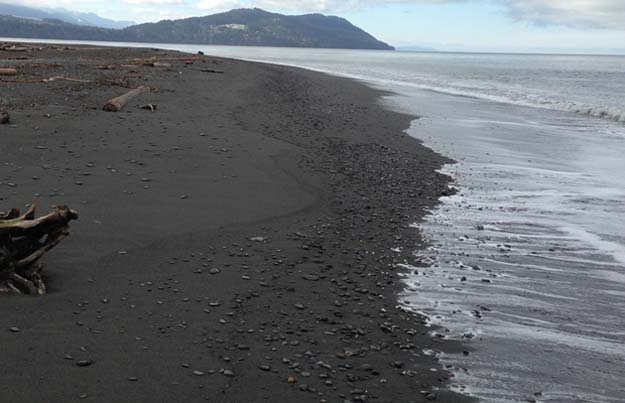A young forest and the Elwha River reclaim their place as dam removal transforms a legendary mountain wilderness
By Lynda V. Mapes / Seattle Times environment reporter
[dropcap]H[/dropcap]igh overhead, a new forest rises where just five years ago there was a lake.
The former Lake Aldwell is but a memory as the Elwha River and forest reclaim their place. Already, thick terraces of gray sediment along the river, rinsed down by the Elwha, are thick with alder trees.
Animal tracks mark fresh winter snow: Raccoons have been out exploring, the prints of their front paws a telltale of their passing. The river pushes fast downstream, alive with blues and green, and clear enough to see its cobbled bottom. The sediment that choked it gray is long gone, stacked now on the banks, layered on the bottom, and rinsed out to sea.
Everywhere on the former lake bottom is the work of a river catching up with 100 years of work, moving the logs, stumps and woody debris that had been stuck behind two dams built for hydropower beginning in 1910.
Released from the lower dam in March 2012, the river by now has stacked mountains of logjams and gravel bars where there once was a quiet lake. Islands of sediment and cobble are starting to grow trees, as the river regains its braided complexity.
The tearing current surges past, hurtling and bright. This will be the first year that fish that migrated out since the dam came down make it back upriver, making 2017 a year to watch on the Elwha.
Upstream, Glines Canyon Dam, 210 feet tall, came down in September 2014, completing the world’s largest dam-removal project. Ever since the river has been roaring back to life.
Already, at the river mouth, the transformation is total. What was a bare, eroded cobbled shore today is Washington’s newest sandy beach. New, and not new: what’s there today is a return to what was there all along, before the dams hoarded the sediment that nourishes the near shore.

They’re Back! Washington’s Elwha River sees largest run of Chinook. KOMO News image.
Now once again, deep, soft, dark gray sediments rinsed down from the mountains are strewn at the river mouth with gifts from the forest upriver. Bits of cedar and fir twigs, still fresh and green, hanks of moss blown from the big-leaf maples in winter storms, and fir cones mix with kelp, algae and river cobble in the wrack pushed into heaps by the tide.
Yet for all the new beach built up at the mouth, particularly to the east, with the prevailing current, sediment is still not reaching the Ediz Hook, reports Ian Miller of Washington Sea Grant, in his quirky and delightful blog, the Coast Nerd Gazette.
Miller is one of a team of scientists who have been monitoring the beach closely since the dams came down.
At issue this year will be improvements in passage into the upper reaches of the river. The National Park Service commissioned rock blasting below Glines Canyon Dam since taking down the dam to provide the open river promised in the original act passed by Congress in 1992. More may still be needed.
Rockfalls obstructed passage below Glines, while debris left after the dam’s removal created a hazard to boaters, shutting the river down to boaters.
The goal is a river finally free of fish-passage barriers, and safe for recreational users
Just 45 miles long, and with three-quarters of its watershed permanently protected within Olympic National Park, the river is a living laboratory for an ecological renewal initiated on a scale never before attempted.
Kim Sager-Fradkin, biologist for the Lower Elwha Klallam Tribe, has seen changes in the river already spread far beyond fish, she explained to students from The Evergreen State College exploring the Elwha on Sunday with Sager-Fradkin as part of a weekend-long study session.
Experiments by Sager-Frakin and her colleagues show some dippers, aquatic songbirds native to the Elwha, just five years after dam removal already are bigger in body size, and more likely to bear a second clutch of young because of the boost in nutrients from returning salmon.
Small mammals are also scurrying all over the former reservoirs, providing a feast for predators, reweaving a bit more of the Elwha’s food web.
NOTE: Featured Image Image by Seattle Times – The mouth of the restored Elwha River is now a beach rich with debris washed down after a hundred years of being buried behind a dam wall.
Click here to get links, video and images . . .








Join the discussion 2 Comments